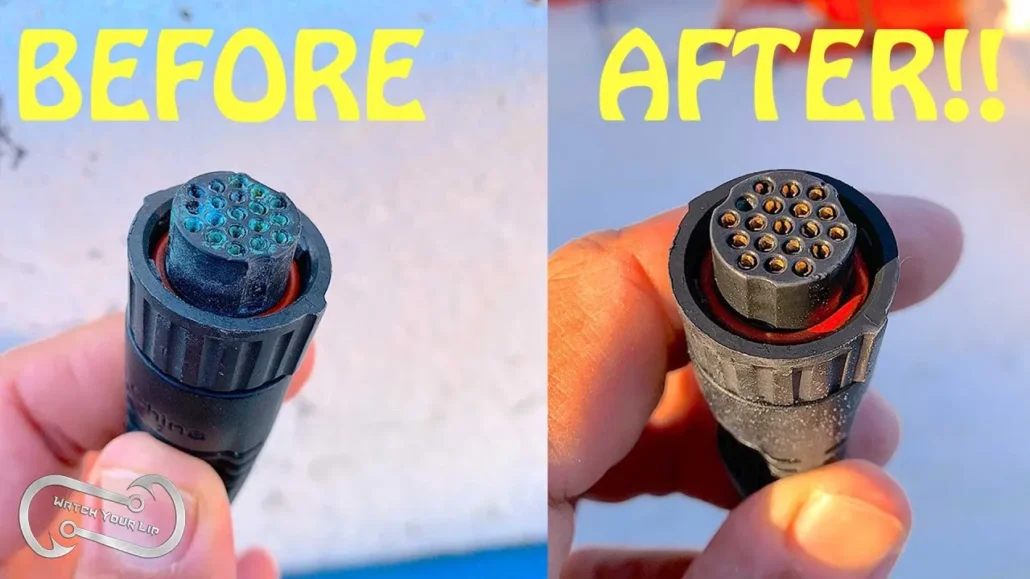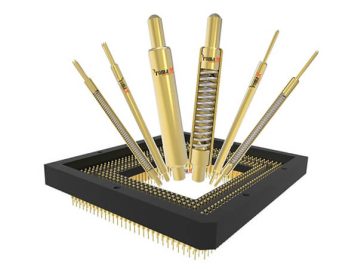Last Updated on August 25, 2023 by Tony
Electrical connector pins are prone to get corroded with time, especially if present outdoors.
People usually pay no heed to the corrosion on the connector pins, but you should remove it.
Corrosion on connector pins can prevent a device from getting charged by reducing electricity flow. Check whether your connectors are free from corrosion if you observe slow charging or less electricity flow.
No need to worry if you cannot clean the sockets’ connectors. In this blog, we will discuss the need to remove corrosion along with steps to clean connector pins.

Why should you Clean Electrical Connectors?
Cleaning electrical connectors is essential to keep the device functional. For instance, if you look at a car having multiple electrical connections in it, you will get to know its importance.
Also, almost all car systems, like sound and battery, work effectively in the presence of clean connectors.
When dirt gathers on the surface of connector pins, it becomes difficult to enjoy a smooth connection. When there are interruptions or blockages in electrical connections, a malfunction occurs.
You will feel troublesome in starting your car’s engine if there is contamination.However, the severity of the issue depends upon the corrosion and dirtiness present.
It means that leaving connectors dirty can stop contacts. Moreover, removing dirt and corrosion from the pins will be difficult after some time.
That’s why you must regularly clean and maintain sockets’ contacts and connector pins.

How to Clean Corrosion from Electrical Connector Pins?
Irrespective of dirt, grease, or corrosion, you can clean all the connector pins conveniently.
Some people use a mixture of water and baking soda to remove corrosion from electrical contacts in the presence of compressed air.
Such compressed air helps get rid of loose dirt.Besides baking soda mixture, you can also use sandpaper, rubbing alcohol, or any other cleaning agent for the removal of dirt and greases.
Let’s explore how to remove corrosion from connector pins step by step:
Pick a Specialty Cleaner
There are many specialty cleaners to remove excess debris, grease, and corroded layers from electrical contacts. You can choose the cleaner of any safe, reliable, and well-trusted brand.
Moreover, follow all the instructions written on the cleaner while using it. Following regulations is very important for the protection of components.Among all the electric contact cleaners, WD-40 is considered reliable.
Only a few drops of this cleaner are enough to clean all the exposed or open areas to remove dirt and debris. This cleaner has the specialty of penetrating in tough corrosion and high grease.
You can also use a handy nozzle to ensure its movement to tough areas of the contact corners.These special cleaners are very effective in restoring the electrical conductivity of circuits.
Moreover, cleaning the contacts with this reduces the probability of a short circuit. Feel free to use it on any rubber, metal, or plastic surface, as the cleaner comes with a quickly evaporating, non-conductive formulation.

Use Baking Soda Mixture to Clean Battery Terminals
Another effective cleaner used to remove corrosion from battery contacts is baking soda and water.
No doubt that it’s very easy to make a mixture of baking soda and water, but it’s not easier to use.
To apply it on all the electrical connections, including battery terminals and connector pins, follow these steps:
- Take a wrench or pile and lose all the nuts and bolts holding cables in the electrical circuit or socket.
- Firstly, remove the negative cable. You can get indications of negative cable through – signs and black color.
- After removing the negative cable, remove the red-colored positive cable having a + sign on it.
- If you still need to mix baking soda and water, apply them directly to the connector pins. All you need is to sprinkle some baking soda powder on the contacts. Then, use a spray bottle to add water to the baking soda. Spray water on the baking soda present on the greasy and corroded contacts till it starts fizzing.
- Scrub stiffen areas of battery terminals and connector pins with the help of a stiff brush. Wearing gloves to keep yourself protected from irritation is also crucial.
- Sprinkle more water and baking soda depending on the need to remove debris.
- Once all the corrosion and greases are removed, you should use distilled water to rinse or clean the wiped area.
- Use a microfiber towel to dry the cleaned connector pins and battery terminals.
- Connect both electric cables back to the socket or battery by ensuring it’s completely dry. While attaching cables, connect the positive red cable first and then the negative black cable.
- Tighten up all the connections.
Irrespective of household sockets and electrical contacts, you can also use a mixture of baking soda and water for car areas.
Boost your car’s working efficiency by cleaning the interior of connectors as well as by removing carbon deposits from engine components.
Finally, apply dielectric grease on the connector on the connector pins to ensure smooth performance.
Use Compressed Air to Remove Loose Debris
If there is loose debris in electrical sockets, contacts, and battery terminals, using compressed air is the ideal way for its removal.
It’s up to you whether you use compressed air cans or home air tanks to eliminate all loose dirt in the connectors.
Besides removing loose debris, compressed air is also effective to use while cleaning electrical contacts with other methods.
For example, you can use compressed air to dry the wet surface before making cable reconnections in the circuit.

Remove Contamination with Rubbing Alcohol
To remove any leftover contamination from the electrical contacts and connector pins, rubbing alcohol is also very effective.
You only need a small amount to clean all the dirt and debris out of the electrical contacts. The working efficiency of rubbing alcohol is similar to acetone for contamination removal.
Whether you want to remove dirt residues, carbon, or greases, acetone and rubbing alcohol are reliable.
The use of brake cleaners has been observed for this purpose in some areas, but we will not suggest its use because brake cleaners can cause harm to the electric connector if there are any cracks or pores in it.
Rub Connector Pins with Sandpaper
Say goodbye to all imperfections, dirt, and debris by rubbing connector pins with small sandpaper. Never use sandpaper of large size. You can also use a pencil eraser if you need sandpaper.
The correct application of a pencil eraser can also make the connector pins shiny, clean, and flawless.
Once you rub the sandpaper or eraser on the pins, use any abrasive material or toothbrush to brush electric contacts gently.
It is useful in removing debris from sand and erasers. Finish cleaning with the help of vinegar or alcohol. Ensure that connector pins are completely dry before placing connections back.
Concluding Remarks!
Improve efficiency and conductivity of electrical circuits by cleaning corrosion from the connector pins.
You can use any chemical or mechanical method to remove rust. Besides the above, you can also use mild acids like vinegar to clean battery terminals and connector pins.
Take more out of your electric contacts by removing all dirt, debris, greases, and corrosions.










